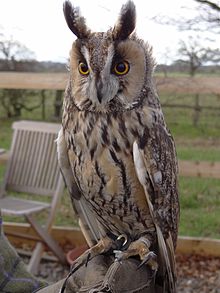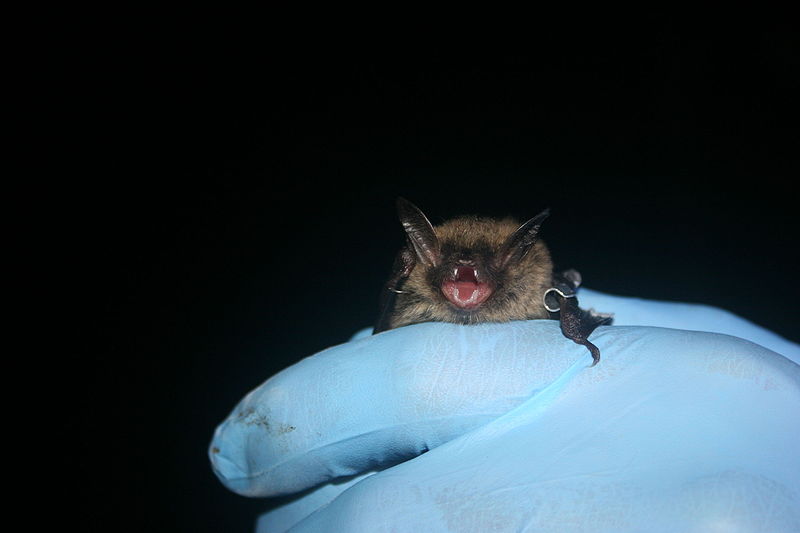
photo by Chris Reynolds
Yeah, okay, okay...sorry...
It's easy enough to spot an ear - or, at least, the outside flap of the ear, which is designed to funnel the sound into the ear hole - but some ears are harder to spot than others.
A cricket's ears are on its front legs; a grasshopper's ear:

Eastern Lubber Grasshopper. Photo by Ryan Wood
is on the side of its abdomen; a spider doesn't have any ears at all.
An owl's ears may seem easy to spot in comparison:

long-eared owl, photo by angusleonard
but don't be fooled because those aren't really ears at all, but tufts of feathers for display purposes. (Owls' ears are actually very interesting. In many nocturnal species one ear is placed quite a lot higher than the other, which helps the owls with locating the squeak of a juicy bit of dinner; and although owls don't have officially have any outer ears at all, their flat faces act in the same way:

Barn Owl, photo by Tony Hisgett from Birmingham UK
funnelling sound into their ear holes. Owls can even alter the shape of their faces to tune in the sound).
Of other remarkable ears, otters have valves in their ears so they can water-proof them:

"Mike" Michael L. Baird [CC BY 2.0 (http://creativecommons.org/licenses/by/2.0)], via Wikimedia Commons
And some bats:

Northern long-eared bat. Photo by Keith Shannon/USFWS
can dislocate their ear drums so they doesn't have to listen to the sound of their own screaming.
Whichever sort of ear you see today, I invite you to admire...perhaps not its beauty, if the ear belongs to a human; but at the very least its totally amazing design.
Spot the Frippet: ear. The hearing word comes from the Latin auris. The corn word comes from the Latin acus, chaff, from the Greek akros, pointed.
No comments:
Post a Comment
All comments are very welcome, but please make them suitable for The Word Den's family audience.